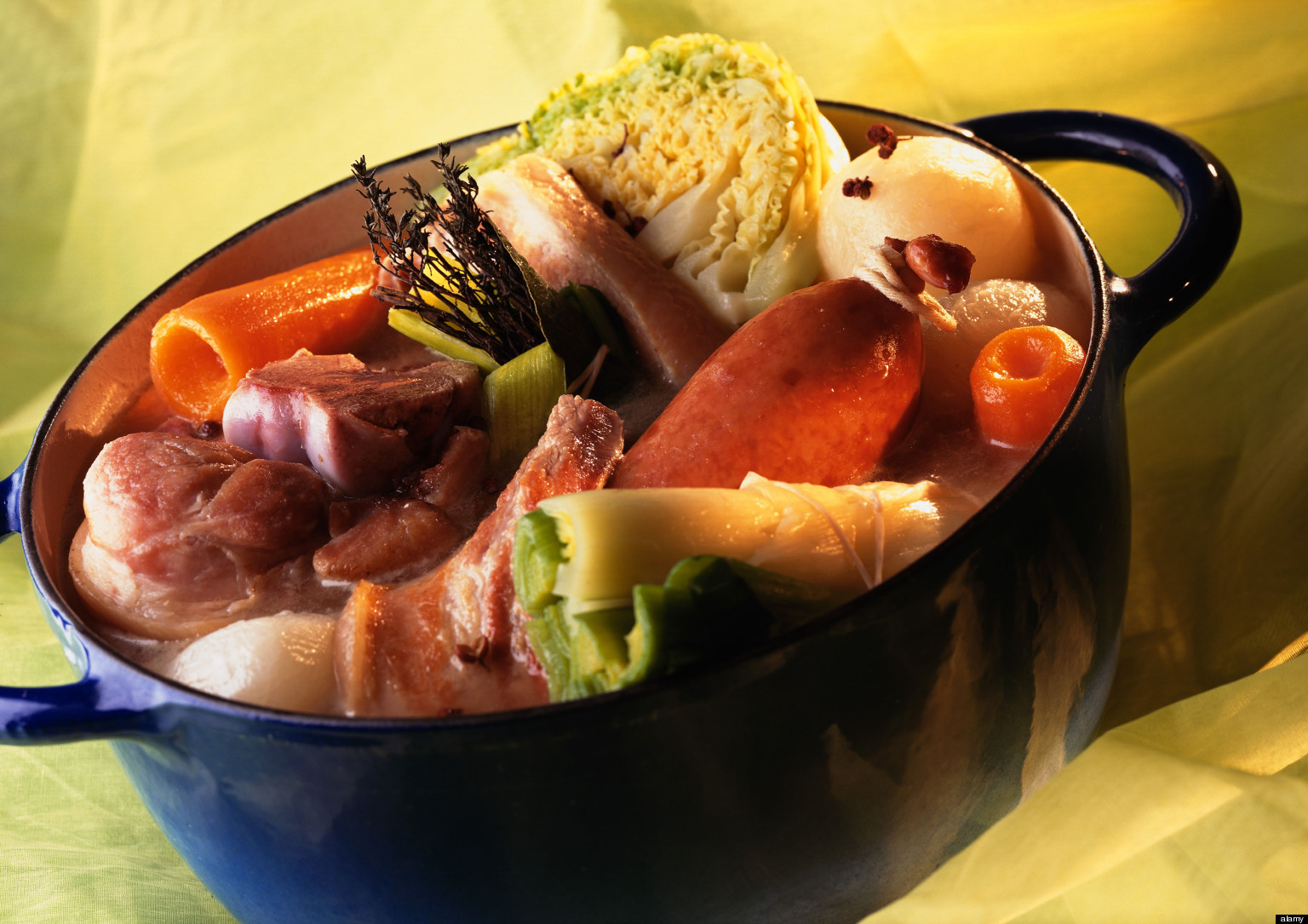The Bouillons of Paris
Have you ever wondered when the first restaurants came about?
Well, of course, people have been selling food in a variety of ways for ages:
from carts on the street to roadside inns and taverns. But, according to most
experts, the original “sit down at a table, look at a menu, and order your meal”
type of establishments paralleled the growth of cities, notably in France.
Statistics show that before the start of the French Revolution in 1789 there
were fewer than 50 restaurants in Paris; twenty or so years later the number
had grown to over 3,000. These early locations were places of distinction
intended for the elite. By the mid-1800s, however, a completely new genre of
restaurant appeared: le bouillon.
 The good news is that some of these lavish restaurants have
been restored to their initial glory. Not only that. Due to what the contemporary
restaurant guide Le Fooding calls “le
rétrofoodisme,” bouillons are once again serving classic French cuisine at very
low prices. And since many modern French people don’t have the time to prepare their
old favorite comfort foods such as soupe
à l’oignon, pot-au-feu, and the
like, they are flocking to the new bouillons. Before Cheapo Snobs rush to
follow suit, though, let it be known that some Snobs have reported that the ambiance
is often much more appetizing than the actual meal!
The good news is that some of these lavish restaurants have
been restored to their initial glory. Not only that. Due to what the contemporary
restaurant guide Le Fooding calls “le
rétrofoodisme,” bouillons are once again serving classic French cuisine at very
low prices. And since many modern French people don’t have the time to prepare their
old favorite comfort foods such as soupe
à l’oignon, pot-au-feu, and the
like, they are flocking to the new bouillons. Before Cheapo Snobs rush to
follow suit, though, let it be known that some Snobs have reported that the ambiance
is often much more appetizing than the actual meal! Le Chartier, in
operation since 1896 at 7, rue du Faubourg Montmartre (9th), can
really give you a taste of old Paris. In keeping with tradition, the current prices
from starters to desserts are unbeatable; to give you an idea, main dishes like
confit de canard or blanquette de veau go from 8,50 to 13,50 euros…or about $9.50 to
$15. But some disappointed diners say that both the service and the food are
mediocre at best. Reviews are better for a revived branch of the Chartier across from the Montparnasse
train station (6th). The setting is even more spectacular, too, with
touches of brass and wood, tiled walls, and etched globe lights (pictured).
Le Chartier, in
operation since 1896 at 7, rue du Faubourg Montmartre (9th), can
really give you a taste of old Paris. In keeping with tradition, the current prices
from starters to desserts are unbeatable; to give you an idea, main dishes like
confit de canard or blanquette de veau go from 8,50 to 13,50 euros…or about $9.50 to
$15. But some disappointed diners say that both the service and the food are
mediocre at best. Reviews are better for a revived branch of the Chartier across from the Montparnasse
train station (6th). The setting is even more spectacular, too, with
touches of brass and wood, tiled walls, and etched globe lights (pictured).
A newcomer, established November 2017, is located in
Montmartre across from the Pigalle métro stop…and is, in fact, called Bouillon Pigalle (18th). The
300-seat modern style restaurant is open seven days a week from noon to
midnight. And while lacking the Art Nouveau atmosphere, it gets rave reviews in
the food department. Everything is made on the premises with products from Rungis, the current version of Les Halles market. Three-course meals for
17 euros have made this place extremely popular, attracting from 800 to 1000
customers daily. If you go, get there before or past rush hours as they don’t
take reservations. Plans are to open a second branch this year at place de la République.
So, if you’re in the mood for home-style French cooking at a
bargain basement price, check out these bouillons. There’s sure to be something
satisfying for the Cheapo and the Snob.
For more about the French capital, take a look at my
recently published book—Pilgrimage to
Paris: The Cheapo Snob’s Guide to the City and the Americans Who Lived There.

Recent Comments